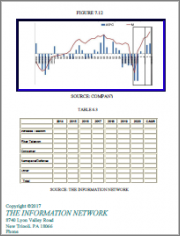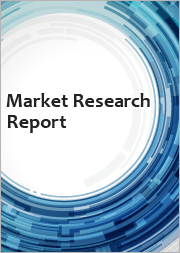
|
시장보고서
상품코드
1530801
세계의 파워 반도체 시장 예측(-2030년) : 제품 유형별, 재료별, 용도별, 최종사용자별, 지역별 분석Power Semiconductor Market Forecasts to 2030 - Global Analysis By Product Type (Discrete Power Semiconductors, Power Modules, Power Integrated Circuits and Other Product Types), Material, Application, End User and By Geography |
||||||
Stratistics MRC에 따르면, 파워 반도체 세계 시장은 2024년 542억 달러로 예측 기간 동안 6.9%의 CAGR을 기록하며 2030년에는 808억 달러에 달할 것으로 예상됩니다.
파워 반도체는 현대 전자 시스템에서 중요한 부품으로 전력을 효율적으로 제어하고 변환하는 데 사용됩니다. 파워 반도체는 고전압과 전류를 처리하여 산업 기계에서 가전제품에 이르기까지 다양한 응용 분야에서 전력 조절을 가능하게 합니다. 이 반도체는 전력 흐름을 관리하고 에너지 효율을 개선하며 열 발생을 억제합니다. 실리콘 카바이드(SiC)와 질화갈륨(GaN)의 사용과 같은 재료 과학의 혁신으로 성능과 효율성이 향상되고 있습니다. 이러한 재료는 기존 실리콘 기반 반도체에 비해 높은 열전도율과 우수한 스위칭 속도를 제공하여 보다 안정적이고 컴팩트한 전원 관리 솔루션에 기여하고 있습니다.
미국 의회 예산국에 따르면 미국의 국방비는 2033년까지 매년 증가할 것으로 예상됩니다. 미국의 국방비는 2023년 7,460억 달러에 달했습니다.
전기자동차와 하이브리드 자동차 급증
전기자동차와 하이브리드 자동차의 보급과 함께 배터리 관리, 모터 제어 및 에너지 변환에 중요한 역할을 하는 첨단 파워 반도체 부품에 대한 수요가 증가하고 있으며, MOSFET, IGBT, GaN 장치와 같은 파워 반도체는 전기 추진 시스템 및 효율적인 전력 변환과 관련된 고전압 및 고전류 관리에 필수적인 요소입니다. 전기 추진 시스템 및 효율적인 전력 변환과 관련된 고전압 및 고전류 관리에 필수적입니다. 이러한 수요 증가는 파워 반도체 기술에 대한 혁신과 투자를 촉진하여 효율, 크기, 성능을 개선하고 시장 성장을 촉진하고 있습니다.
높은 R&D 비용
탄화규소(SiC)나 질화갈륨(GaN)과 같은 첨단 기술 개발에는 많은 투자가 필요하며, 이는 생산 비용 상승과 가격 압력으로 이어질 수 있습니다. 재정적 제약에 직면한 중소기업은 기술 발전을 따라잡기 어려워 경쟁력을 떨어뜨리고 기술 혁신을 저해할 수 있습니다. 또한, R&D 비용의 상승은 신기술의 상용화를 지연시키고, 첨단 솔루션이 전체 시장에 보급되는 것을 지연시킬 수 있습니다.
태양광 및 풍력 발전 시스템 채택 증가
신재생에너지원은 전력망과 통합하여 에너지 사용을 최적화하기 위해 효율적인 전력 관리 및 변환 기술을 필요로 합니다. 파워 반도체는 태양광 인버터 및 풍력 터빈의 DC-AC 변환, 최대 전력점 추종(MPPT), 에너지 저장 관리 등의 작업에 필수적입니다. 또한, 태양광 및 풍력 발전 설비가 증가함에 따라 고효율 다이오드, MOSFET, IGBT와 같은 첨단 파워 반도체 부품과 실리콘 카바이드(SiC), 질화갈륨(GaN)과 같은 신흥 기술에 대한 수요가 증가하고 있습니다.
열 관리의 과제
파워 반도체는 작동 중에 많은 열을 발생시키며, 부적절한 열 관리는 과열, 효율 저하, 디바이스 수명 단축으로 이어질 수 있습니다. 이로 인해 복잡하고 비용이 많이 드는 냉각 솔루션을 개발해야 하며, 이는 전체 시스템 비용을 증가시킬 수 있습니다. 또한, 열 관리 요구 사항의 증가는 제품 개발을 지연시키고 R&D 비용을 증가시켜 시장의 기술 혁신과 신기술의 신속한 시장 출시에 영향을 미칩니다.
COVID-19의 영향:
COVID-19는 공급망에 혼란을 일으켜 생산 및 출하 지연을 유발함으로써 파워 반도체 시장에 큰 영향을 미쳤습니다. 팬데믹은 초기에는 경기 둔화와 공장 폐쇄로 인한 수요 감소로 이어졌습니다. 그러나 세계가 적응함에 따라 전자제품에 대한 의존도가 높아지고 원격 근무, 의료 및 재생에너지와 같은 분야의 성장으로 인해 수요가 급증했습니다. 이 위기는 디지털 전환을 가속화하고 탄력적인 공급망의 필요성을 강조하며 반도체 기술 및 인프라에 대한 장기적인 투자를 촉진했습니다.
예측 기간 동안 개별 파워 반도체 부문이 가장 큰 비중을 차지할 것으로 예상
이산소 파워 반도체는 다재다능하고 광범위한 응용 분야로 인해 예측 기간 동안 가장 큰 성장세를 보일 것으로 예상됩니다. 이산형 파워 반도체는 소비자 전자기기에서 산업용 기계에 이르기까지 다양한 시스템에서 특정 전력 제어 작업을 효율적으로 처리합니다. 지속적인 진화를 통해 성능, 신뢰성, 에너지 효율이 향상되고 있습니다. 자동차, 재생에너지, 산업 자동화 등의 분야에서 에너지 효율이 높은 솔루션에 대한 수요가 증가하면서 시장 성장의 원동력이 되고 있습니다.
예측 기간 동안 질화 갈륨 부문은 가장 높은 CAGR을 보일 것으로 예상
질화갈륨 부문은 예측 기간 동안 가장 높은 CAGR을 보일 것으로 예상됩니다. 이러한 GaN 디바이스는 더 빠른 스위칭 속도, 더 높은 효율, 더 높은 열전도율, 에너지 효율을 개선하고 열 발생을 감소시켜 더 작고 안정적인 전원 관리 솔루션을 가능하게 합니다. 이는 보다 컴팩트하고 신뢰할 수 있는 전원 관리 솔루션을 제공하며, 전기자동차, 재생에너지 시스템, 고주파 전원 공급 장치와 같은 애플리케이션에서 GaN 기술의 채택이 가속화되고 있습니다.
가장 큰 점유율을 차지하는 지역
북미에서는 전기자동차의 보급이 확대되면서 배터리 관리 시스템 및 모터 제어용 파워 반도체에 대한 수요가 증가하고 있습니다. 또한, 태양광, 풍력 등 재생에너지의 확대는 효율적인 전력 변환 및 관리 시스템에 대한 수요를 증가시키며 시장 성장을 견인하고 있습니다.
CAGR이 가장 높은 지역:
아시아태평양은 중국, 일본, 한국 등의 국가에서 EV 인프라 및 생산에 대한 대규모 투자가 특히 배터리 관리 및 모터 제어 애플리케이션을 위한 파워 반도체에 대한 수요를 촉진하고 있기 때문에 예측 기간 동안 가장 높은 CAGR을 유지할 것으로 예상됩니다. 또한, 아시아태평양 국가들은 태양광 및 풍력 발전과 같은 재생에너지에 대한 관심이 증가하고 있으며, 이러한 에너지원을 통합하고 최적화하기 위해 고급 전력 관리 솔루션이 필요합니다.
무료 맞춤형 서비스:
이 보고서를 구독하는 고객은 다음과 같은 무료 맞춤화 옵션 중 하나를 사용할 수 있습니다.
- 기업 개요
- 추가 시장 기업의 종합적인 프로파일링(최대 3개사까지)
- 주요 기업 SWOT 분석(최대 3개사까지)
- 지역 세분화
- 고객의 관심에 따른 주요 국가별 시장 추정치, 예측, CAGR(주: 타당성 검토에 따른)
- 경쟁사 벤치마킹
- 제품 포트폴리오, 지리적 입지, 전략적 제휴를 기반으로 한 주요 기업 벤치마킹
목차
제1장 주요 요약
제2장 서문
- 개요
- 이해관계자
- 조사 범위
- 조사 방법
- 데이터 마이닝
- 데이터 분석
- 데이터 검증
- 조사 접근법
- 조사 정보 출처
- 1차 조사 정보 출처
- 2차 조사 정보 출처
- 가정
제3장 시장 동향 분석
- 성장 촉진요인
- 성장 억제요인
- 기회
- 위협
- 제품 분석
- 용도 분석
- 최종사용자 분석
- 신흥 시장
- COVID-19의 영향
제4장 Porter's Five Forces 분석
- 공급 기업의 교섭력
- 구매자의 교섭력
- 대체품의 위협
- 신규 참여업체의 위협
- 경쟁 기업 간의 경쟁 관계
제5장 세계의 파워 반도체 시장 : 제품 유형별
- 디스크리트 파워 반도체
- 파워 모듈
- 파워 집적회로
- 기타 제품 유형
제6장 세계의 파워 반도체 시장 : 재료별
- 실리콘
- 실리콘 카바이드
- 질화갈륨
- 기타 재료
제7장 세계의 파워 반도체 시장 : 용도별
- 스마트폰과 태블릿
- 웨어러블
- 전기자동차(EV)
- ADAS(첨단 운전자 보조 시스템)
- 기지국과 네트워크 장비
- 기타 용도
제8장 세계의 파워 반도체 시장 : 최종사용자별
- 자동차
- 산업
- IT 및 통신
- 헬스케어
- 에너지
- 기타 최종사용자
제9장 세계의 파워 반도체 시장 : 지역별
- 북미
- 미국
- 캐나다
- 멕시코
- 유럽
- 독일
- 영국
- 이탈리아
- 프랑스
- 스페인
- 기타 유럽
- 아시아태평양
- 일본
- 중국
- 인도
- 호주
- 뉴질랜드
- 한국
- 기타 아시아태평양
- 남미
- 아르헨티나
- 브라질
- 칠레
- 기타 남미
- 중동 및 아프리카
- 사우디아라비아
- 아랍에미리트
- 카타르
- 남아프리카공화국
- 기타 중동 및 아프리카
제10장 주요 발전
- 계약, 파트너십, 협업, 합작투자
- 인수와 합병
- 신제품 발매
- 사업 확대
- 기타 주요 전략
제11장 기업 개요
- Alpha & Omega Semiconductor
- Broadcom Inc.
- Fuji Electric Co. Ltd
- Infineon Technologies AG
- Littlefuse Inc.
- Magnachip Semiconductor Corp.
- Microchip Technology Inc.
- Mitsubishi Electric Corporation
- Nexperia Holding BV
- NXP Semiconductors NV
- ON Semiconductor Corporation
- Qorvo Inc.
- Renesas Electronics Corporation
- Rohm Co. Ltd
- Semikron International
- STMicroelectronics NV
- Texas Instruments Inc.
- Toshiba Corporation
- Wolfspeed Inc.
According to Stratistics MRC, the Global Power Semiconductor Market is accounted for $54.2 billion in 2024 and is expected to reach $80.8 billion by 2030 growing at a CAGR of 6.9% during the forecast period. Power semiconductors are crucial components in modern electronic systems, used to control and convert electrical power efficiently. They handle high voltages and currents, enabling the regulation of power in various applications, from industrial machinery to consumer electronics. These semiconductors manage power flow, improve energy efficiency, and reduce heat generation. Innovations in material science, such as the use of silicon carbide (SiC) and gallium nitride (GaN), are enhancing performance and efficiency. These materials offer higher thermal conductivity and better switching speeds compared to traditional silicon-based semiconductors, contributing to more reliable and compact power management solutions.
According to the US Congressional Budget Office, defense spending in the United States is predicted to increase every year until 2033. Defense outlays in the United States amounted to USD 746 billion in 2023.
Market Dynamics:
Driver:
Surge in electric and hybrid vehicles
As electric and hybrid vehicles become more prevalent, the demand for advanced power semiconductor components increases due to their critical role in battery management, motor control, and energy conversion. Power semiconductors like MOSFETs, IGBTs, and GaN devices are essential for managing the high voltages and currents involved in electric propulsion systems and efficient power conversion. This growing demand drives innovation and investment in power semiconductor technology, leading to advancements in efficiency, size, and performance boosting the growth of the market.
Restraint:
High R&D costs
Significant investment is required to develop advanced technologies like silicon carbide (SiC) and gallium nitride (GaN), which can lead to higher production costs and pricing pressures. Smaller firms, facing financial constraints, may struggle to keep pace with technological advancements, reducing competition and potentially stifling innovation. Additionally, high R&D expenses can delay the commercialization of new technologies, slowing the overall market adoption of cutting-edge solutions.
Opportunity:
Increasing adoption of solar and wind power systems
Renewable energy sources require efficient power management and conversion technologies to integrate with the grid and optimize energy usage. Power semiconductors are essential for tasks such as DC-AC conversion, maximum power point tracking (MPPT), and energy storage management in solar inverters and wind turbines. Further the growth in solar and wind energy installations drives demand for advanced power semiconductor components, such as high-efficiency diodes, MOSFETs, and IGBTs, as well as emerging technologies like silicon carbide (SiC) and gallium nitride (GaN).
Threat:
Thermal management challenges
Power semiconductors generate significant heat during operation, and inadequate thermal management can lead to overheating, reduced efficiency, and shorter device lifespans. This necessitates the development of complex and costly cooling solutions, which can increase overall system costs and the increased thermal management requirements can also delay product development and add to R&D expenses, impacting the market's ability to innovate and bring new technologies to market quickly.
Covid-19 Impact:
COVID-19 significantly impacted the power semiconductor market by disrupting supply chains, causing delays in production and shipping. The pandemic initially led to a decline in demand due to economic slowdowns and factory closures. However, as the world adapted, there was a surge in demand driven by increased reliance on electronics, remote work, and growth in sectors like healthcare and renewable energy. The crisis accelerated digital transformation and highlighted the need for resilient supply chains, driving long-term investments in semiconductor technology and infrastructure.
The discrete power semiconductors segment is expected to be the largest during the forecast period
The discrete power semiconductors is expected to be the largest during the forecast period due to their versatility and wide application range. They handle specific power control tasks efficiently in various systems, from consumer electronics to industrial machinery. Their continued evolution enhances performance, reliability, and energy efficiency. The growing demand for energy-efficient solutions in sectors like automotive, renewable energy, and industrial automation drives their market growth.
The gallium nitride segment is expected to have the highest CAGR during the forecast period
The gallium nitride segment is expected to have the highest CAGR during the forecast period because these GaN devices enable faster switching speeds, higher efficiency, and greater thermal conductivity, which improves energy efficiency and reduces heat generation. This leads to more compact and reliable power management solutions. The adoption of GaN technology is accelerating in applications such as electric vehicles, renewable energy systems, and high-frequency power supplies.
Region with largest share:
North America is projected to hold the largest market share during the forecast period owing to the growing adoption of EVs in North America increases demand for power semiconductors for battery management systems and motor control. Further the expansion of renewable energy sources like solar and wind drives the need for efficient power conversion and management systems propelling the market growth.
Region with highest CAGR:
Asia Pacific is projected to hold the highest CAGR over the forecast period due to significant investments in EV infrastructure and production in countries like China, Japan, and South Korea are driving demand for power semiconductors, particularly for battery management and motor control applications. Additionally the growing focus on renewable energy sources, such as solar and wind power, in Asia Pacific countries necessitates advanced power management solutions to integrate and optimize these energy sources.
Key players in the market
Some of the key players in Power Semiconductor market include Alpha & Omega Semiconductor, Broadcom Inc., Fuji Electric Co. Ltd, Infineon Technologies AG, Littlefuse Inc., Magnachip Semiconductor Corp., Microchip Technology Inc., Mitsubishi Electric Corporation, Nexperia Holding BV, NXP Semiconductors NV, ON Semiconductor Corporation, Qorvo Inc., Renesas Electronics Corporation, Rohm Co. Ltd, Semikron International, STMicroelectronics NV, Texas Instruments Inc., Toshiba Corporation and Wolfspeed Inc.
Key Developments:
In July 2024, Infineon expanded Infringement Lawsuit against Innoscience and files complaint with U.S. International Trade Commission. In addition, Infineon filed a complaint with the U.S. International Trade Commission (USITC) containing legal claims referring to the same four patents covered by the lawsuit.
In June 2024, Infineon introduced power system reliability Modeling to reduce power shortages and blackouts in data center systems. Target applications of the solution include DCDC converters, ACDC rectifiers and IBC modules utilized in data centers, AI servers, GPUs, and telecom networks.
In June 2024, VIS and NXP to established a joint venture to build and operate a 300mm Fab. The joint-venture fab will support 130nm to 40nm mixed-signal, power management and analog products, targeting the automotive, industrial, consumer and mobile end markets.
Product Types Covered:
- Discrete Power Semiconductors
- Power Modules
- Power Integrated Circuits
- Other Product Types
Materials Covered:
- Silicon
- Silicon Carbide
- Gallium Nitride
- Other Materials
Applications Covered:
- Smartphones & Tablets
- Wearables
- Electric Vehicles (EVs)
- Advanced Driver Assistance Systems
- Base Stations & Networking Equipments
- Other Applications
End Users Covered:
- Automotive
- Industrial
- IT & Telecommunication
- Healthcare
- Energy
- Other End Users
Regions Covered:
- North America
- US
- Canada
- Mexico
- Europe
- Germany
- UK
- Italy
- France
- Spain
- Rest of Europe
- Asia Pacific
- Japan
- China
- India
- Australia
- New Zealand
- South Korea
- Rest of Asia Pacific
- South America
- Argentina
- Brazil
- Chile
- Rest of South America
- Middle East & Africa
- Saudi Arabia
- UAE
- Qatar
- South Africa
- Rest of Middle East & Africa
What our report offers:
- Market share assessments for the regional and country-level segments
- Strategic recommendations for the new entrants
- Covers Market data for the years 2022, 2023, 2024, 2026, and 2030
- Market Trends (Drivers, Constraints, Opportunities, Threats, Challenges, Investment Opportunities, and recommendations)
- Strategic recommendations in key business segments based on the market estimations
- Competitive landscaping mapping the key common trends
- Company profiling with detailed strategies, financials, and recent developments
- Supply chain trends mapping the latest technological advancements
Free Customization Offerings:
All the customers of this report will be entitled to receive one of the following free customization options:
- Company Profiling
- Comprehensive profiling of additional market players (up to 3)
- SWOT Analysis of key players (up to 3)
- Regional Segmentation
- Market estimations, Forecasts and CAGR of any prominent country as per the client's interest (Note: Depends on feasibility check)
- Competitive Benchmarking
- Benchmarking of key players based on product portfolio, geographical presence, and strategic alliances
Table of Contents
1 Executive Summary
2 Preface
- 2.1 Abstract
- 2.2 Stake Holders
- 2.3 Research Scope
- 2.4 Research Methodology
- 2.4.1 Data Mining
- 2.4.2 Data Analysis
- 2.4.3 Data Validation
- 2.4.4 Research Approach
- 2.5 Research Sources
- 2.5.1 Primary Research Sources
- 2.5.2 Secondary Research Sources
- 2.5.3 Assumptions
3 Market Trend Analysis
- 3.1 Introduction
- 3.2 Drivers
- 3.3 Restraints
- 3.4 Opportunities
- 3.5 Threats
- 3.6 Product Analysis
- 3.7 Application Analysis
- 3.8 End User Analysis
- 3.9 Emerging Markets
- 3.10 Impact of Covid-19
4 Porters Five Force Analysis
- 4.1 Bargaining power of suppliers
- 4.2 Bargaining power of buyers
- 4.3 Threat of substitutes
- 4.4 Threat of new entrants
- 4.5 Competitive rivalry
5 Global Power Semiconductor Market, By Product Type
- 5.1 Introduction
- 5.2 Discrete Power Semiconductors
- 5.3 Power Modules
- 5.4 Power Integrated Circuits
- 5.5 Other Product Types
6 Global Power Semiconductor Market, By Material
- 6.1 Introduction
- 6.2 Silicon
- 6.3 Silicon Carbide
- 6.4 Gallium Nitride
- 6.5 Other Materials
7 Global Power Semiconductor Market, By Application
- 7.1 Introduction
- 7.2 Smartphones & Tablets
- 7.3 Wearables
- 7.4 Electric Vehicles (EVs)
- 7.5 Advanced Driver Assistance Systems
- 7.6 Base Stations & Networking Equipments
- 7.7 Other Applications
8 Global Power Semiconductor Market, By End User
- 8.1 Introduction
- 8.2 Automotive
- 8.3 Industrial
- 8.4 IT & Telecommunication
- 8.5 Healthcare
- 8.6 Energy
- 8.7 Other End Users
9 Global Power Semiconductor Market, By Geography
- 9.1 Introduction
- 9.2 North America
- 9.2.1 US
- 9.2.2 Canada
- 9.2.3 Mexico
- 9.3 Europe
- 9.3.1 Germany
- 9.3.2 UK
- 9.3.3 Italy
- 9.3.4 France
- 9.3.5 Spain
- 9.3.6 Rest of Europe
- 9.4 Asia Pacific
- 9.4.1 Japan
- 9.4.2 China
- 9.4.3 India
- 9.4.4 Australia
- 9.4.5 New Zealand
- 9.4.6 South Korea
- 9.4.7 Rest of Asia Pacific
- 9.5 South America
- 9.5.1 Argentina
- 9.5.2 Brazil
- 9.5.3 Chile
- 9.5.4 Rest of South America
- 9.6 Middle East & Africa
- 9.6.1 Saudi Arabia
- 9.6.2 UAE
- 9.6.3 Qatar
- 9.6.4 South Africa
- 9.6.5 Rest of Middle East & Africa
10 Key Developments
- 10.1 Agreements, Partnerships, Collaborations and Joint Ventures
- 10.2 Acquisitions & Mergers
- 10.3 New Product Launch
- 10.4 Expansions
- 10.5 Other Key Strategies
11 Company Profiling
- 11.1 Alpha & Omega Semiconductor
- 11.2 Broadcom Inc.
- 11.3 Fuji Electric Co. Ltd
- 11.4 Infineon Technologies AG
- 11.5 Littlefuse Inc.
- 11.6 Magnachip Semiconductor Corp.
- 11.7 Microchip Technology Inc.
- 11.8 Mitsubishi Electric Corporation
- 11.9 Nexperia Holding BV
- 11.10 NXP Semiconductors NV
- 11.11 ON Semiconductor Corporation
- 11.12 Qorvo Inc.
- 11.13 Renesas Electronics Corporation
- 11.14 Rohm Co. Ltd
- 11.15 Semikron International
- 11.16 STMicroelectronics NV
- 11.17 Texas Instruments Inc.
- 11.18 Toshiba Corporation
- 11.19 Wolfspeed Inc.



















